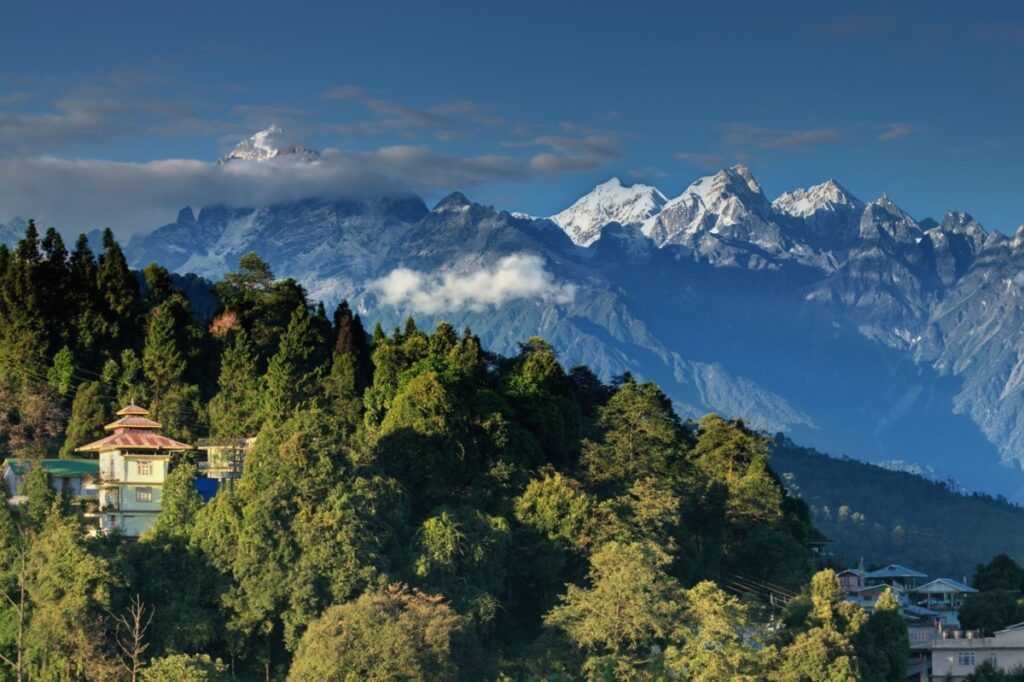Nestled in the lap of the Himalayas, Sikkim beckons travelers with its breathtaking landscapes, rich culture, and vibrant traditions. As you plan your adventure to this enchanting destination, understanding the intricacies of permits is crucial for a seamless and memorable journey. In this comprehensive guide, we unravel the details of Sikkim’s permits, ensuring you’re well-prepared for an unforgettable exploration.
Protected Area Permits (PAP): Unlocking Sikkim’s Treasures
If you’re an avid traveler seeking to unravel the hidden gems of Sikkim, understanding the intricacies of Protected Area Permits (PAP) is crucial. These permits grant access to some of the most breathtaking landscapes in Sikkim.
Who Needs It:
Domestic tourists and international travelers eager to explore specific protected areas must obtain a Protected Area Permit (PAP). Whether you’re a local enthusiast or a global wanderer, this permit is your ticket to some of Sikkim’s most pristine and restricted destinations.
Issuing Authority:
For domestic tourists, the vigilant Police Check Posts are the go-to places for acquiring the PAP. These posts efficiently process permits, ensuring a smooth entry into protected zones. Foreign tourists, on the other hand, need to approach the Tourism & Civil Aviation Department, which oversees the issuance of permits to international explorers.
Places in Sikkim that Require PAP to Visit
Let’s delve into the specific details for various places across the districts.
East District: Tshongo – Baba Mandir and Nathula Pass
- Tshongo – Baba Mandir: Domestic tourists can obtain permits at the Police Check Post. For foreign tourists, access is permitted only till Tsomgo Lake. The permit is issued by the Tourism & Civil Aviation Department, and vehicle permits are coordinated through Police check posts with the assistance of registered Travel Agencies.
- Nathula Pass: This historical mountain pass requires permits issued by the Tourism Department. Vehicle permits for domestic tourists are obtained through registered Travel Agencies. The majestic Nathula Pass, connecting India and China, is a highlight that demands careful planning.
West District: Dzongri Trek and Singalila Trek
- Dzongri Trek: Adventure enthusiasts seeking the Dzongri Trek should secure permits from the Tourist Information Centers (TIC) in Pelling and Gangtok. These permits are essential to explore the mesmerizing landscapes of West Sikkim.
- Singalila Trek: Another trekking paradise, the Singalila Trek, requires permits issued by the TIC in Pelling. Clearance from the Home Department, Forest Department, and Army is necessary, emphasizing the need for meticulous planning through registered Travel Agencies.
North District: Yumthang, Yumesamdong, Thangu-Chopta Valley, and Gurudongmar
- Yumthang: Domestic tourists can obtain permits at the Police check post. For foreigners, permits are issued by the Tourism Department, and vehicle permits are obtained from Police Check Posts.
- Yumesamdong: Permits for domestic tourists are available at the Police check post, while foreigners must acquire them from the Tourism Department. Vehicle passes are issued from Police Check Posts, ensuring a regulated entry process.
- Thangu-Chopta Valley: Domestic tourists can secure permits at Police Check posts. Foreigners must apply through registered Sikkim Tourism Travel Agents, emphasizing group visits for these areas. Permits are issued by the Tourism Department, with vehicle permits coordinated through Police Check posts.
- Gurudongmar: Permits for domestic tourists are available at Police check posts, while foreigners must obtain them from the Permit Cell, Tourism Department, up to Thangu.
Additional Permits: Green Lake Trek and Mainam Trekking
- Green Lake Trek: For the adventurous souls, the Green Lake Trek requires permits issued by the Adventure Cell of the Tourism Department. Clearance from the Forest Department, Home Department, and Army is necessary, and applications are facilitated through registered Travel Agencies.
- South District: Mainam Trekking: Trekking permits for Mainam are issued through TIC Pelling and TIC Gangtok. Clearance from Home, Army, Forest, and Police departments is crucial. The trekking experience in the southern part of Sikkim promises awe-inspiring views and unique landscapes.
Application Process:
For domestic tourists, the process is straightforward – head to the nearest Police Check Post, where permits are efficiently processed for your protected area adventure. International travelers, however, should approach the Tourism & Civil Aviation Department, ensuring their journey aligns with regulatory standards.
Essential Documents for Protected Area Permits in Sikkim
Embarking on an adventure to Sikkim’s protected areas requires more than just an adventurous spirit; it demands a meticulous approach to documentation. Whether you’re heading to Nathula, Gurudongmar, Zuluk, or exploring on two wheels, here’s a breakdown of the documents you need to ensure a hassle-free journey.
Documents Required for Nathula:
For Indians:
- Voters ID/Driving License: Primary identification proof for Indian citizens.
- 2 Passport Size Photos: Visual representation for documentation purposes.
- Children Below 18: Birth certificate or father’s voter ID/passport. Aadhar card not accepted.
For Foreigners:
- Not allowed to visit Nathula.
Documents Required for Gurudongmar:
For Indians:
- Voters ID/Driving License: Primary identification for Indian citizens.
- 2 Passport Size Photos: Visual representation for documentation purposes.
- Children Below 18: Birth certificate or father’s voter ID/passport. Aadhar card not accepted.
For Foreigners:
- Not allowed to visit Gurudongmar directly but can explore Lachen & Yumthang.
- Documents for Lachen & Yumthang: Photocopy of valid passport, Indian Visa, 2 passport size photos, along with original documents & Inner Line Permit (ILP).
- Children Below 18: Birth certificate or father’s voter ID/passport. Aadhar card not accepted.
Documents Required for Zuluk:
For Indians:
- Voters ID/Driving License: Primary identification for Indian citizens.
- 2 Passport Size Photos: Visual representation for documentation purposes.
- Children Below 18: Birth certificate or father’s voter ID/passport. Aadhar card not accepted.
For Foreigners:
- Not allowed to visit Zuluk.
Documents Required for Two-Wheelers/Motor Bike Permit:
- Registration Certificate of the Bike: Proof of bike ownership and details.
- Driving License: Valid license for the rider.
- Pollution Certificate: Ensuring adherence to environmental standards.
- Insurance Certificate: Documenting coverage for the bike.
- Passport Size Photos (2 nos): Visual identification of the rider.
- Identity Proof of Rider and Co-rider: Additional identification for comprehensive documentation.
Ensuring that you have the right documents in place not only streamlines the permit application process but also contributes to responsible tourism. As you gear up for your Sikkim sojourn, double-check your paperwork, follow the guidelines, and get ready for an expedition into the heart of the Himalayas. Safe travels!
Additional Considerations for PAP:
For Tsomgo Lake, a permit allows a day trip to witness the breathtaking beauty of this glacial lake. Nathula Pass permits, especially for foreign tourists, involve coordination between the Tourism Department and Police Check Posts through registered Travel Agencies. These additional measures ensure a controlled and regulated flow of visitors to sensitive areas.
Embarking on a journey into the heart of Sikkim’s protected areas is a privilege that comes with responsibilities. The PAP is not just a permit; it’s your commitment to preserving the pristine beauty of these landscapes.
Medical Advisory for High Altitudes: Ensuring a Healthy Expedition
While obtaining permits is essential, health considerations should not be overlooked, especially when venturing into high-altitude areas. It is advisable to book accommodations and services from health and safety-compliant providers. Sikkim’s mesmerizing landscapes come with challenges, and prioritizing your well-being ensures a more enjoyable experience. All foreign tourists are also required to register within 24 hours of arrival, contributing to a secure and organized travel environment.
Restricted Area Permits (RAP): Navigating Sikkim’s Controlled Zones
Who Needs It:
Foreign tourists, excluding those of Bhutanese origin, desiring to enter a Protected or Restricted Area of Sikkim must obtain a Restricted Area Permit (RAP). This ensures controlled access to sensitive regions, balancing tourism with conservation efforts.
Issuing Authority:
The RAP requires approval from the competent authority after filling the prescribed form. The issuing authority differs based on the nationality of the tourist. Citizens of Nepal/Bangladesh may produce a valid identity card reflecting their origin while applying for the permit.
Offices for Permit Acquisition:
The RAP can be obtained from various offices, including the Ministry of Home Affairs in New Delhi, Indian Missions Abroad, Immigration Offices at major airports, Tourist Information Centers, and Sikkim Government offices. This decentralized approach aims to facilitate a smoother application process for foreign visitors.
Validity and Extension:
The initial RAP is valid for 30 days, and an extension can be obtained up to a maximum of 60 days. Trekking permits for protected areas are also available, with a mandatory physical fitness certificate from competent government medical officers.
Sikkim’s Restricted Areas:
Foreigners holding a valid RAP can explore specific regions in East, West, South, and North Sikkim, strictly for tourism purposes. However, certain areas like Tsomgo Lake in East Sikkim and Lachen-Lachung-Yumthang-Thangu Valley in North Sikkim require an additional Protected Area Permit (PAP), each with its own set of guidelines.
Application Process Flow:
The process involves filling an application form with personal details, submitting necessary documents, and obtaining a permit for 30 days. The foreign tourist is required to present themselves in the Foreigners Registration Office (FRO) for recording exit details upon leaving.
As you embark on your Sikkim adventure, armed with permits and a wealth of information, remember that responsible tourism is key. Adhere to regulations, respect the environment, and embrace the cultural richness of this Himalayan gem. Sikkim awaits, promising an expedition that is not only memorable but also leaves the landscape untouched for generations to come. Safe travels!

